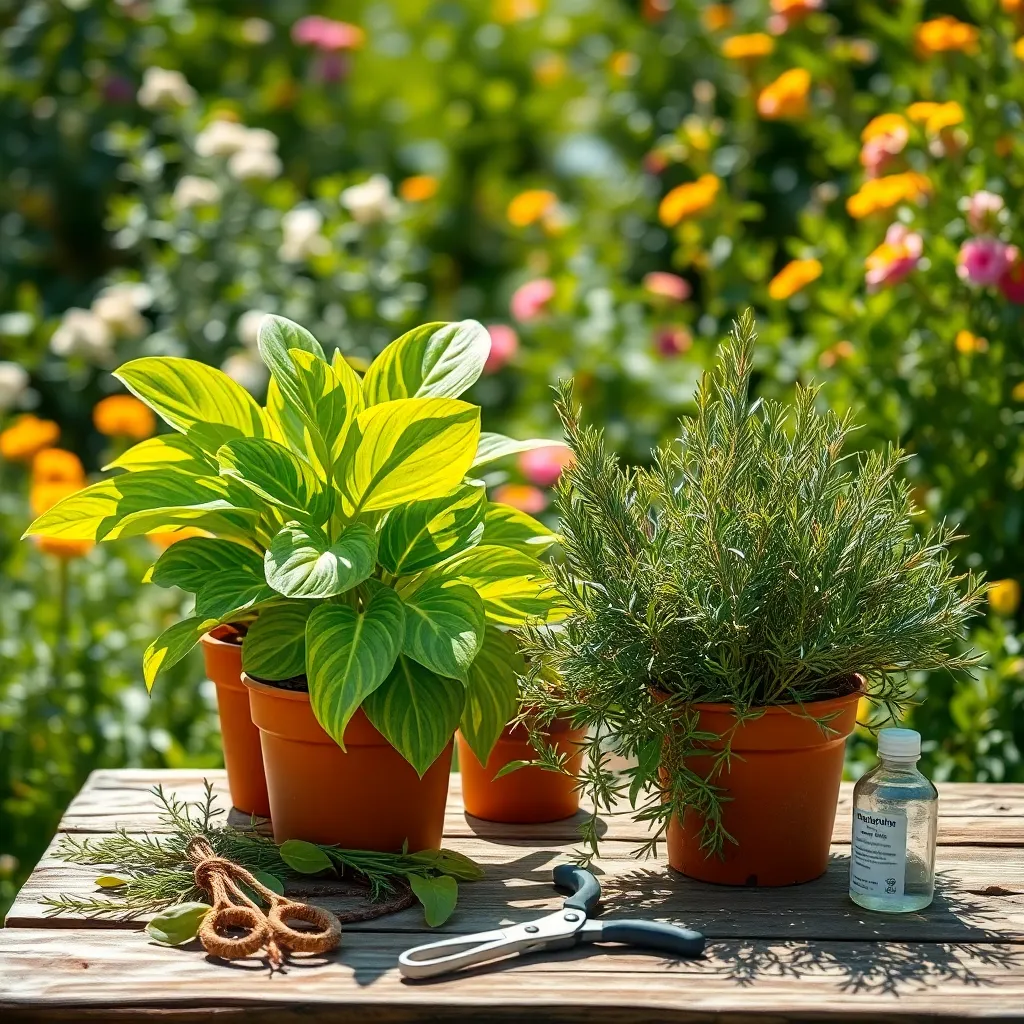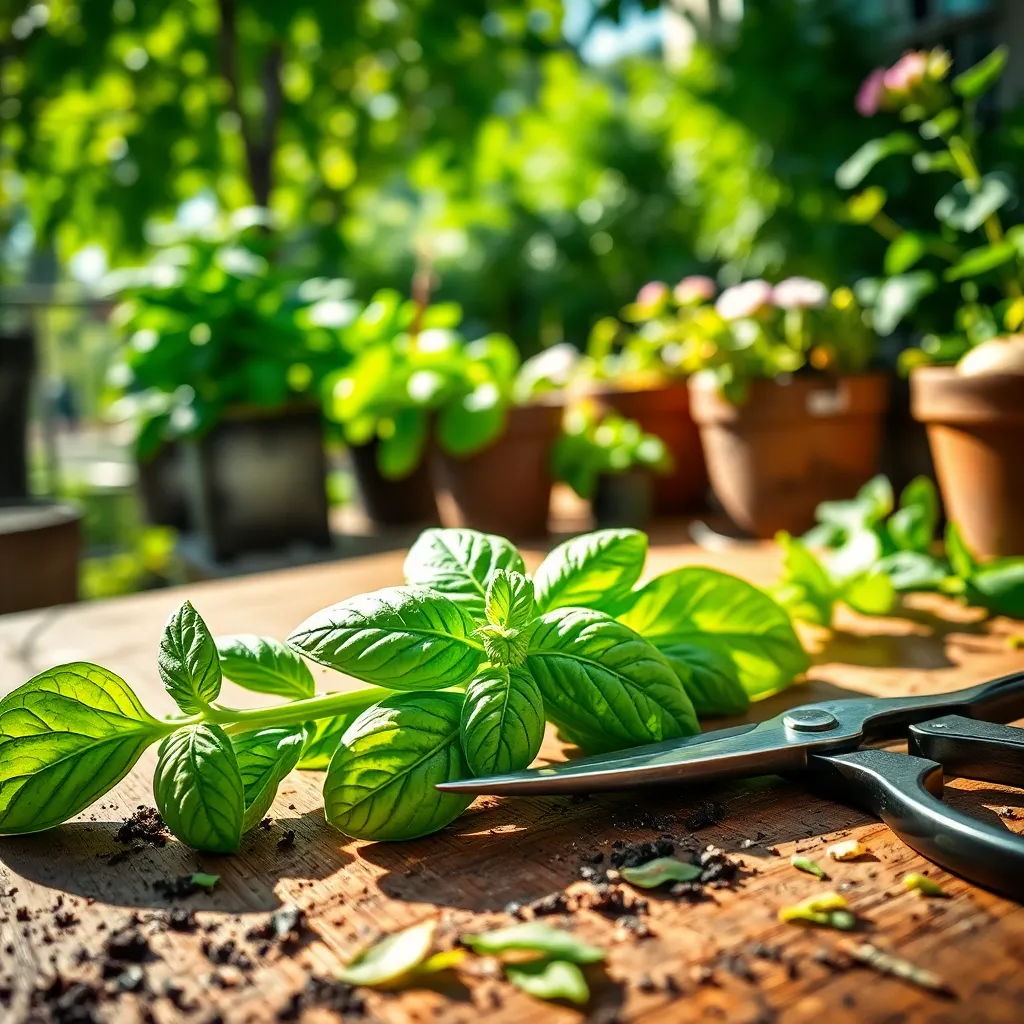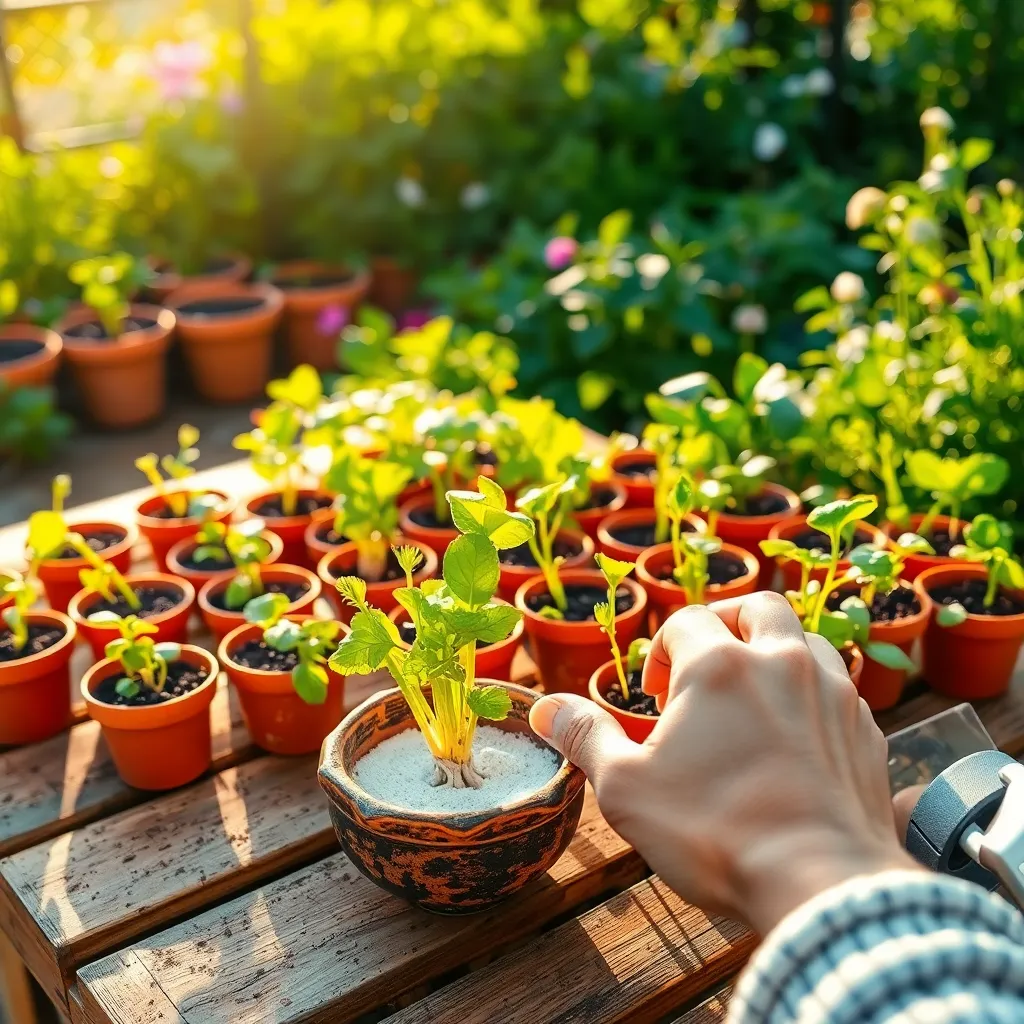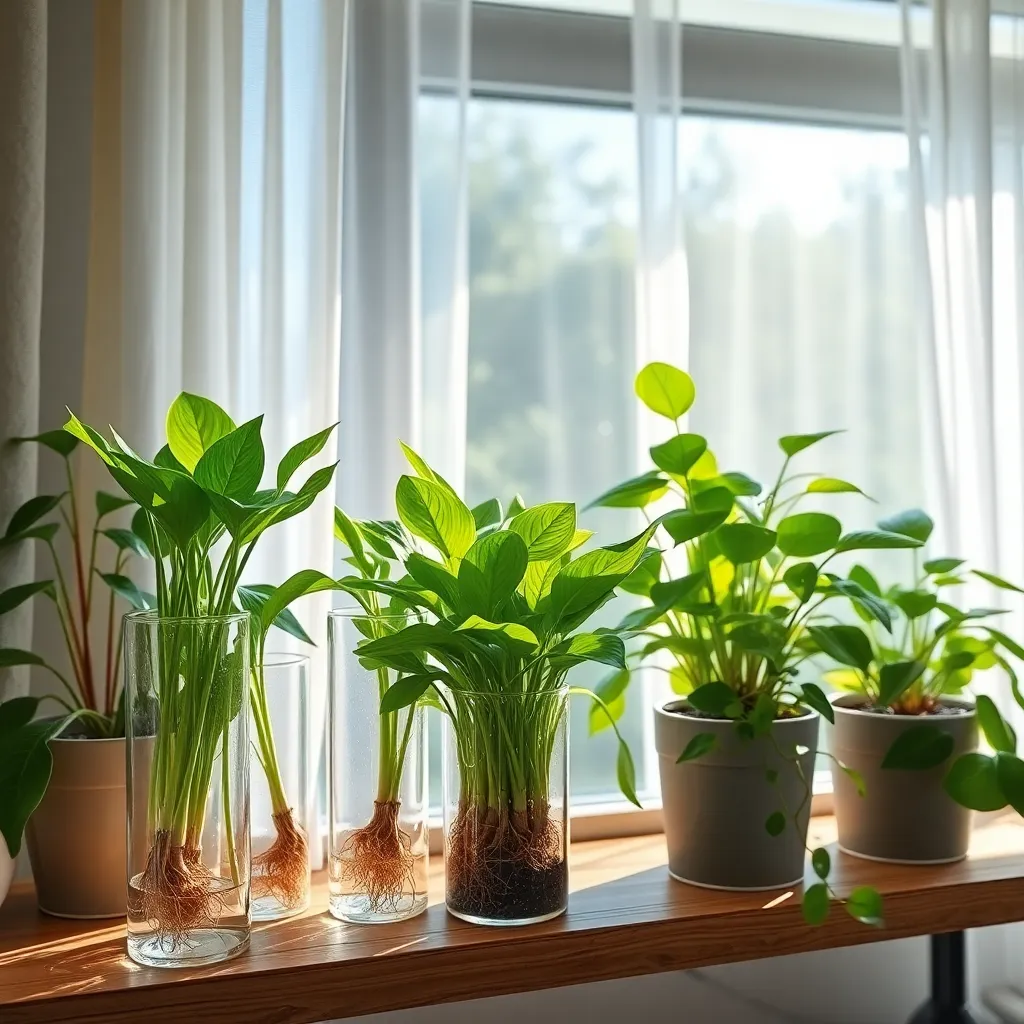Gardening is more than just a hobby; it’s a nurturing journey where patience meets the rewards of growth and beauty. Whether you’re a seasoned gardener with hands perpetually graced by soil or a budding enthusiast eager to cultivate your green thumb, understanding how to grow plants from cuttings is an invaluable skill that bridges generations and landscapes. This method not only allows you to propagate your favorite plants but also deepens your connection to the cycle of life within your garden.
Plant propagation through cuttings is a practice steeped in both tradition and innovation, offering an exciting pathway to expand your garden without the need for seeds. In this article, you’ll discover the art and science behind selecting the right cuttings, preparing them properly, and nurturing them into thriving plants. For beginners, these pages will demystify the process, breaking down each step into approachable, actionable tasks. Experienced gardeners will find new tips and insights to refine their techniques, ensuring even greater success in their propagation endeavors.
As you delve into these pages, anticipate a journey that will enrich your gardening experience with tangible results and newfound confidence. From understanding the types of cuttings to recognizing the best time for propagation, the knowledge shared here will empower you to transform mere clippings into flourishing additions to your garden. Embrace the opportunity to multiply your plant collection with ease, and let the garden of your dreams take root in the rich soil of your newfound expertise. Whether your space is a sprawling landscape or a cozy balcony, the joy of growing plants from cuttings awaits, promising growth in more ways than one.
Select Healthy Parent Plants

To begin successfully growing plants from cuttings, selecting healthy parent plants is essential. Look for plants that are disease-free, vigorous, and have a strong growth habit, as these traits will be passed on to the cuttings.
Healthy parent plants should have plenty of new growth, as this is where cuttings are usually taken from. It’s important to choose plants that have been well-watered and properly fed to ensure the cuttings have the best chance of rooting.
Inspect the leaves and stems for any signs of pests or disease, such as discoloration or wilting. If a plant shows signs of stress, it’s best to avoid using it for cuttings until it has been treated and recovered.
For optimal results, consider the time of year; spring and early summer are generally the best times to take cuttings because plants are actively growing. However, some plants, like certain woody perennials, may root more effectively in late summer or early fall.
Cut Stems at an Angle

When preparing to take cuttings, it’s essential to cut stems at a 45-degree angle. This technique provides a larger surface area for water absorption, which is crucial for root development.
Using a sharp, clean knife or pruning shears ensures a clean cut without crushing plant tissues. Crushed stems can impede water uptake and increase susceptibility to disease, so avoid using blunt tools.
After cutting, remove any leaves from the lower part of the stem to prevent them from rotting in the soil. Leaving a few leaves at the top helps the cutting continue photosynthesizing while developing roots.
For those looking to enhance rooting success, consider dipping the cut end in a rooting hormone before planting. This can significantly boost root formation, especially for woody or slow-rooting plant varieties.
Dip Cuttings in Rooting Hormone

Once you’ve cut your stems at an angle, it’s time to dip them in rooting hormone. Rooting hormone boosts the chances of successful root development, especially in woody or semi-hardwood cuttings.
You can find rooting hormone in powder, liquid, or gel forms at most garden centers. Choose a type that suits your preference and gently dip the cut end of the stem into the hormone, ensuring an even coating.
For beginners, powdered rooting hormone is easy to use and store. Simply tap off the excess powder to prevent clumping, which can hinder absorption.
Advanced gardeners might prefer liquid or gel forms for more precise application. These allow for better control over the amount used and can lead to more consistent results.
After applying the rooting hormone, plant the cutting in a pot filled with a well-draining soil mix. A combination of perlite, peat moss, and vermiculite works well for most cuttings.
Ensure the soil is moist but not waterlogged to prevent rot. Maintain humidity around the cuttings by covering them with a plastic bag or placing them in a mini greenhouse setup.
Remember, patience is key, as roots may take several weeks to form. Keep the cuttings in a warm, bright location, but out of direct sunlight to avoid stress.
Plant in Moist Potting Mix

After dipping your cuttings in the rooting hormone, it’s time to plant them in a moist potting mix. Choose a mix that retains moisture but also drains well, such as one containing peat moss or coconut coir combined with perlite or vermiculite.
Ensure that the potting mix is evenly damp before inserting the cuttings. To achieve this, water the mix thoroughly and then let any excess water drain out, preventing waterlogging which can lead to rot.
Use a pencil or stick to make small holes in the potting mix before placing the cuttings. This minimizes damage to the delicate stem when planting and ensures the rooting hormone remains intact on the cutting.
Position the cuttings so that any leaves or nodes are above the soil line, as this encourages upward growth and prevents decay. Firm the potting mix gently around the base of the cutting to support it and promote contact with the soil.
For beginners, maintaining consistent moisture is crucial. Cover the pot with a clear plastic bag or use a propagation dome to create a humid environment, reducing the need for frequent watering.
Advanced tip: Place the cuttings under grow lights or in an area with indirect sunlight to accelerate the rooting process. Monitor the moisture levels closely, as different environmental conditions can cause the mix to dry out at varying rates.
Provide Adequate Light and Water

Proper lighting is essential for the successful growth of cuttings, as it drives photosynthesis which fuels root development. Place your cuttings in a location where they receive indirect sunlight for at least six hours a day, such as near a bright window.
If natural light is insufficient, consider using grow lights to supplement your cuttings’ needs. Position the lights about 6-12 inches above the plants and keep them on for 12-16 hours daily to mimic natural conditions.
Watering cuttings requires a delicate balance; too much can cause rot, while too little can lead to dehydration. Keep the potting mix consistently moist but not soggy, and check moisture levels by inserting your finger about an inch into the soil.
For beginners, using a spray bottle can help achieve the right moisture level without overwatering. More experienced gardeners might consider a self-watering system to maintain consistent moisture levels, especially if growing multiple cuttings.
Humidity is also crucial, as cuttings absorb moisture through their leaves while roots are developing. Covering the cuttings with a clear plastic bag or dome can help maintain high humidity levels, creating an ideal microenvironment for growth.
Regularly check for signs of new growth, which indicates successful rooting and that your cuttings are ready for gradual acclimatization to their permanent environment. This transition should be done slowly to avoid shock, gradually exposing the plants to their new conditions over several days.
Conclusion: Growing Success with These Plants
In exploring “How to Grow Plants from Cuttings,” we’ve unearthed five essential relationship concepts: nurturing patience, fostering resilience, embracing adaptability, cultivating trust, and celebrating growth. Each concept mirrors the delicate process of nurturing plant cuttings into thriving greenery, emphasizing the importance of care and attention in relationships.
As an immediate action step, choose one relationship in your life where you can apply these principles. Perhaps it’s a friendship needing more patience or a partnership that could benefit from increased trust. Take a small, intentional step today to nurture that connection.
Remember, relationships, like plants, flourish with ongoing care and commitment. Bookmark this article as your go-to guide for relationship growth—your future self will thank you for keeping this wisdom at hand.
As you embark on this journey, envision a future where your relationships are as robust and vibrant as a flourishing garden. With dedication and love, you can cultivate connections that stand the test of time. Save this article to ensure you have these valuable insights ready to inspire your relationship success story. Let today be the beginning of a more connected and fulfilling chapter in your life.





